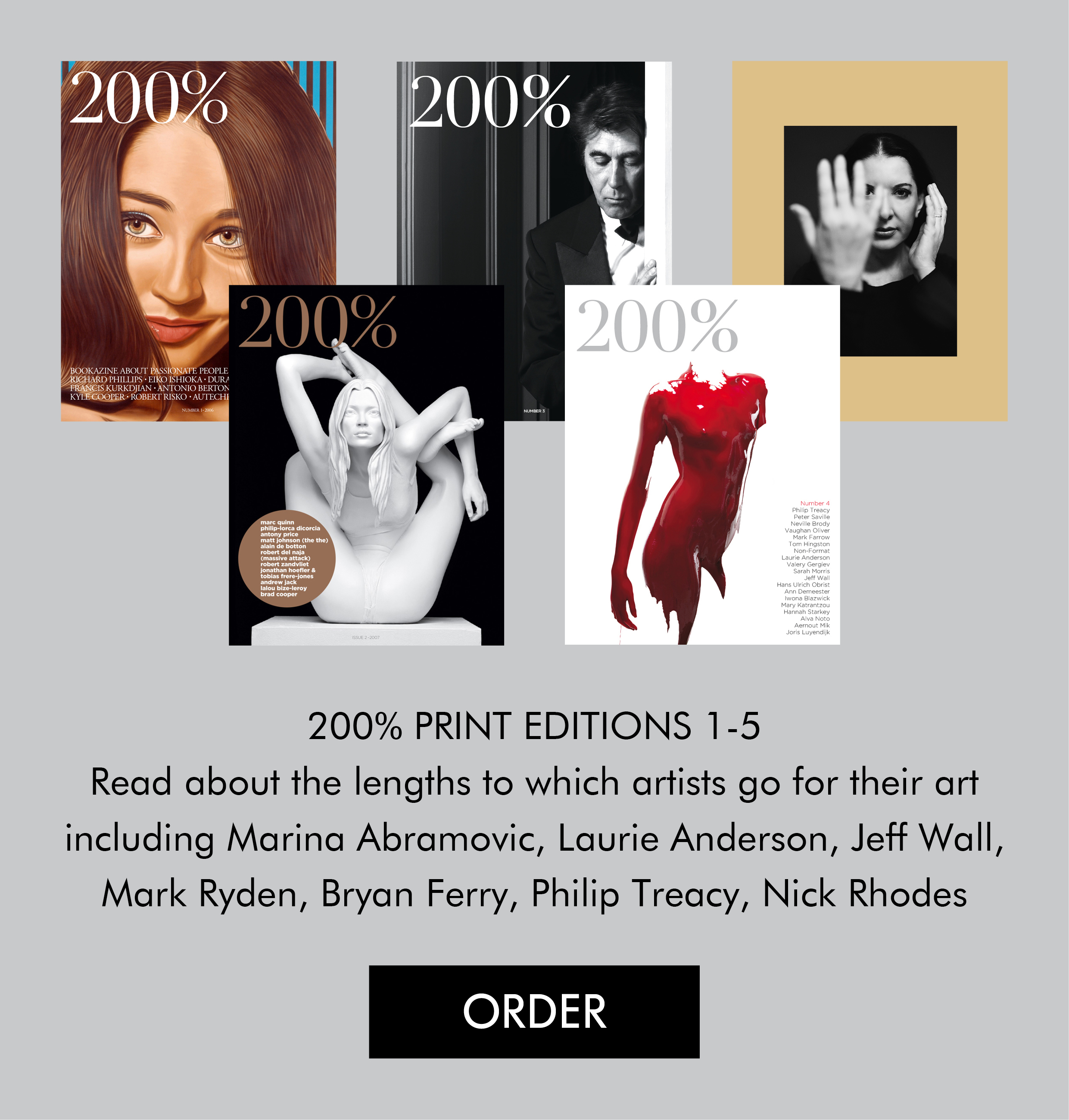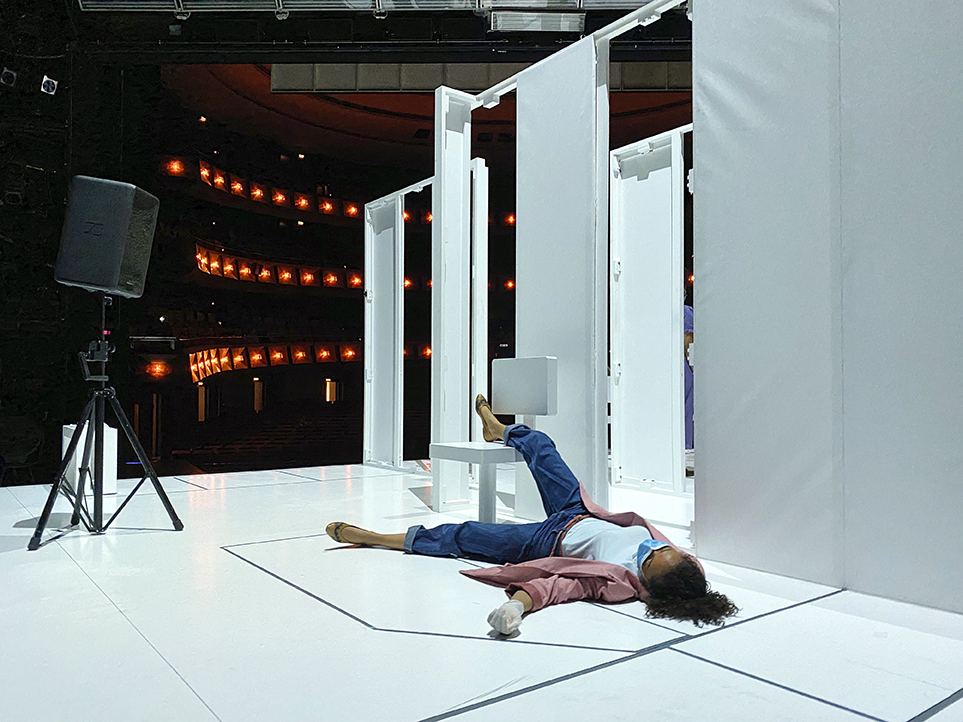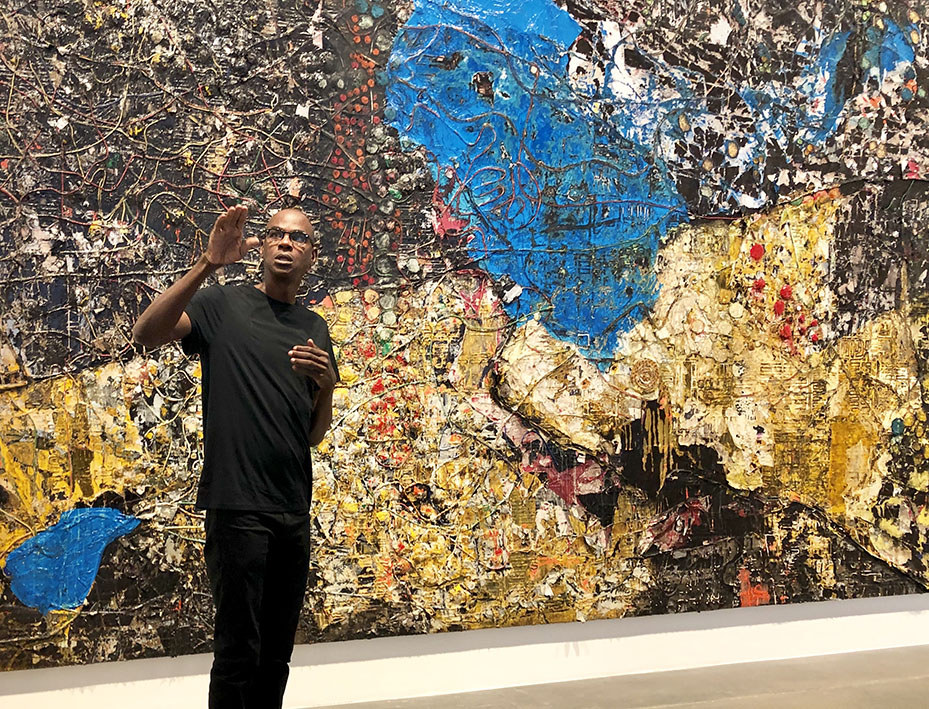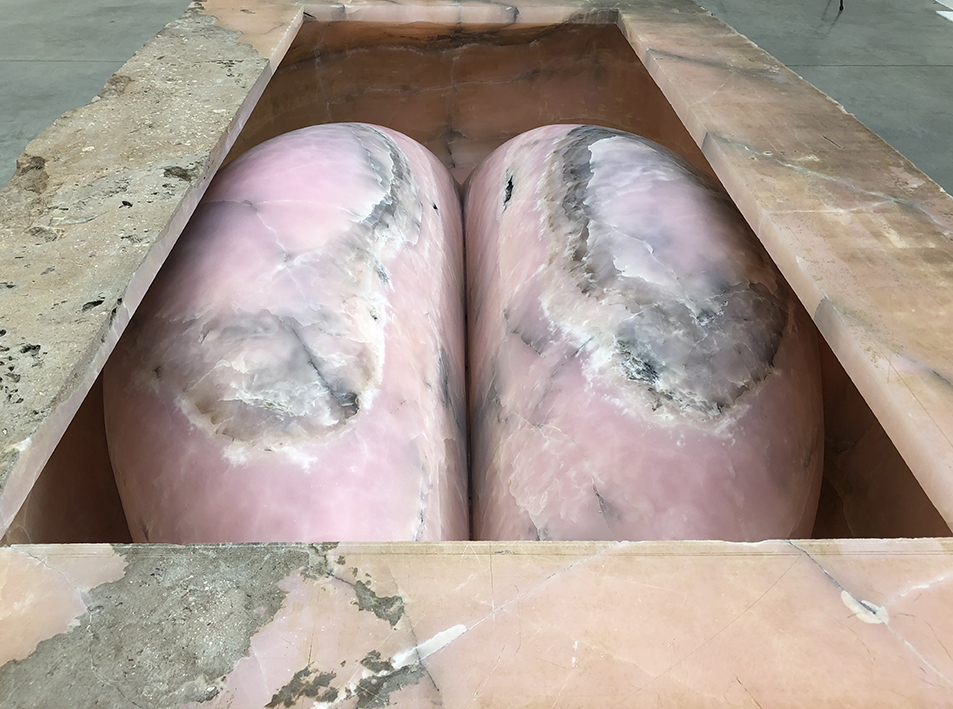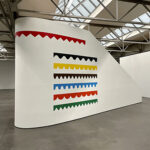 On 27 January 2010, Steve Jobs, the CEO of Apple, revealed in his keynote speech the launch of the iPad. Jobs summed up seven tasks that the device would do better than the iPhone and the lap-top: browsing the web; email; enjoying and sharing photographs; watching videos; enjoying your music collection; playing games and reading e-books.
The list didn’t include another task that the iPad is capable of undertaking – drawing. David Hockney explores in his Royal Academy show, ‘A Bigger Picture’, the possibilities of drawing with the iPad and how useful it is for his art.
‘The Arrival of Spring in Woldgate, East Yorkshire in 2011’ is a body of work that consists of one large oil painting and 51 expansive prints (each 144.1 x 108cm) wherein Hockney documents the changes in the scenery from winter to late spring in the part of England where he grew up. The 51 prints are drawn with the iPad and titled after the day they were produced – thereby producing a visual diary of seasons in Yorkshire.
Hockney drew these works with a stylus on the iPad screen and with ‘Brushes’ – a painting application (app) designed for use by the iPhone and iPad. The brush strokes of these images create a similar effect to that of the tools in Photoshop and Illustrator wherein one can adjust the master diameter and the hardness of the brush. The app allows you to work in multiple layers and adjust the opacity of each layer. Hockney’s skill is that the final images don’t look photoshoped but retain painterly as he applies the tradition of Old Master’s Painting to the medium.
In a small, narrow room Hockney’s most recent work is displayed: Yosemite National Park in California. These five vertical, nearly four metres high depictions of the National Park with waterfalls, mysterious low hanging mist before mountains were also created with the iPad. Looking up at these high prints, with their positioning in the narrow room simulates the feeling of being physically present in Yosemite Valley. In these works Hockney demonstrates the added value of the iPad’s tools, such as the transparency in the cloud that is on the verge of dissolving, exposing the mountain behind it.
The works made with the iPad don’t have the same emotional resonance to Hockney’s exuberant oil paintings of hawthorns in full blossom which possess the distinct graphicness of the artist’s best work. As blossoms arrive and bloom for a short period, though – which Hockney describes as ‘Action Week’ – it provides an explanation as to why Hockney became interested in drawing with the iPad.
First of all, the tool’s speed enables him to capture the seasonal changes. As spring time is short-lived compared with winter and summer, it must be captured with some immediacy and urgency. The iPad is a perfect godsend as it enables you to work fast and you can capture the excitement of the ‘here and now’, infusing the work with spontaneity.
“Any good draughtsman is interested in speed – you can identify it in Rembrandt’s drawings. Lots of artist would have responded to the iPad – Tiepolo, Van Gogh”, Hockney told Jackie Wullschlager in an interview with the Financial Times.
Another reason one can could consider of as to why Hockney is enthusiastic about the device is the realisation of time becoming limited – given his advancing year (he is 74 years old) – and the iPad allows him to work quickly.
On 27 January 2010, Steve Jobs, the CEO of Apple, revealed in his keynote speech the launch of the iPad. Jobs summed up seven tasks that the device would do better than the iPhone and the lap-top: browsing the web; email; enjoying and sharing photographs; watching videos; enjoying your music collection; playing games and reading e-books.
The list didn’t include another task that the iPad is capable of undertaking – drawing. David Hockney explores in his Royal Academy show, ‘A Bigger Picture’, the possibilities of drawing with the iPad and how useful it is for his art.
‘The Arrival of Spring in Woldgate, East Yorkshire in 2011’ is a body of work that consists of one large oil painting and 51 expansive prints (each 144.1 x 108cm) wherein Hockney documents the changes in the scenery from winter to late spring in the part of England where he grew up. The 51 prints are drawn with the iPad and titled after the day they were produced – thereby producing a visual diary of seasons in Yorkshire.
Hockney drew these works with a stylus on the iPad screen and with ‘Brushes’ – a painting application (app) designed for use by the iPhone and iPad. The brush strokes of these images create a similar effect to that of the tools in Photoshop and Illustrator wherein one can adjust the master diameter and the hardness of the brush. The app allows you to work in multiple layers and adjust the opacity of each layer. Hockney’s skill is that the final images don’t look photoshoped but retain painterly as he applies the tradition of Old Master’s Painting to the medium.
In a small, narrow room Hockney’s most recent work is displayed: Yosemite National Park in California. These five vertical, nearly four metres high depictions of the National Park with waterfalls, mysterious low hanging mist before mountains were also created with the iPad. Looking up at these high prints, with their positioning in the narrow room simulates the feeling of being physically present in Yosemite Valley. In these works Hockney demonstrates the added value of the iPad’s tools, such as the transparency in the cloud that is on the verge of dissolving, exposing the mountain behind it.
The works made with the iPad don’t have the same emotional resonance to Hockney’s exuberant oil paintings of hawthorns in full blossom which possess the distinct graphicness of the artist’s best work. As blossoms arrive and bloom for a short period, though – which Hockney describes as ‘Action Week’ – it provides an explanation as to why Hockney became interested in drawing with the iPad.
First of all, the tool’s speed enables him to capture the seasonal changes. As spring time is short-lived compared with winter and summer, it must be captured with some immediacy and urgency. The iPad is a perfect godsend as it enables you to work fast and you can capture the excitement of the ‘here and now’, infusing the work with spontaneity.
“Any good draughtsman is interested in speed – you can identify it in Rembrandt’s drawings. Lots of artist would have responded to the iPad – Tiepolo, Van Gogh”, Hockney told Jackie Wullschlager in an interview with the Financial Times.
Another reason one can could consider of as to why Hockney is enthusiastic about the device is the realisation of time becoming limited – given his advancing year (he is 74 years old) – and the iPad allows him to work quickly.
 In his iPad drawings and his oil paintings of landscapes Hockney’s approach remains the same. The works are vivid, full of bright, attractive colours making us ponder the life cycles of birth and death. Also, there is a blending of a sense of optimism, happiness in the works with profoundness and substance. In Graham Greene’s novel ‘The End of the Affair’, one of his characters remarks that “happiness is even harder to write than goodness” and “goodness has so little fictional value”. Nine out of ten times artists have been inspired by hardship and dramatic episodes in their lives more so than happy episodes.
Hockney, however, just like Paul McCartney, has a talent to produce works that are simultaneously optimistic and profound. Sir Paul’s creation ‘When I’m Sixty-Four’ addressed in a light-hearted manner the subject of ageing wherein a young man sings to his lover about growing old together with her: “Will you still need me, will you still feed me when I’m sixty-four?” Listening to the song puts you in a cheerful mood whilst anxieties of getting older are addressed such as being dependent on others and whether one will be forgotten.
Whilst, sadly, Steve Jobs, didn’t make it to 64 (as he died at the age of 56 last year), most likely, he would have been very interested to see what David Hockney has produced with the device he presented to the world on 27 January 2010.
Written by Thierry Somers
Pictures: David Hockney, The Arrival of Spring in Woldgate, East Yorkshire in 2011 (twenty eleven) – 12 April, iPad drawing printed on paper, 144.1 x 108 cm; one of a 52-part work, Courtesy of the artist, Copyright David Hockney; David Hockney, The Arrival of Spring in Woldgate, East Yorkshire in 2011 (twenty eleven) – 2 January, iPad drawing printed on paper, 144.1 x 108 cm; one of a 52-part work, Courtesy of the artist, Copyright David Hockney; David Hockney, The Arrival of Spring in Woldgate, East Yorkshire in 2011 (twenty eleven), Oil on 32 canvases (each 91.4 x 121.9 cm), 365.8 x 975.4 cm; one of a 52-part work, Courtesy of the artist, Copyright David Hockney, Photo credit: Jonathan Wilkinson
David Hockney, ‘A Bigger Picture’, Royal Academy until 9 April 2012
http://www.royalacademy.org.uk/
LEAVE A COMMENT
What is your view on David Hockney’s iPad drawings? Should they be considered as serious works of art?
In his iPad drawings and his oil paintings of landscapes Hockney’s approach remains the same. The works are vivid, full of bright, attractive colours making us ponder the life cycles of birth and death. Also, there is a blending of a sense of optimism, happiness in the works with profoundness and substance. In Graham Greene’s novel ‘The End of the Affair’, one of his characters remarks that “happiness is even harder to write than goodness” and “goodness has so little fictional value”. Nine out of ten times artists have been inspired by hardship and dramatic episodes in their lives more so than happy episodes.
Hockney, however, just like Paul McCartney, has a talent to produce works that are simultaneously optimistic and profound. Sir Paul’s creation ‘When I’m Sixty-Four’ addressed in a light-hearted manner the subject of ageing wherein a young man sings to his lover about growing old together with her: “Will you still need me, will you still feed me when I’m sixty-four?” Listening to the song puts you in a cheerful mood whilst anxieties of getting older are addressed such as being dependent on others and whether one will be forgotten.
Whilst, sadly, Steve Jobs, didn’t make it to 64 (as he died at the age of 56 last year), most likely, he would have been very interested to see what David Hockney has produced with the device he presented to the world on 27 January 2010.
Written by Thierry Somers
Pictures: David Hockney, The Arrival of Spring in Woldgate, East Yorkshire in 2011 (twenty eleven) – 12 April, iPad drawing printed on paper, 144.1 x 108 cm; one of a 52-part work, Courtesy of the artist, Copyright David Hockney; David Hockney, The Arrival of Spring in Woldgate, East Yorkshire in 2011 (twenty eleven) – 2 January, iPad drawing printed on paper, 144.1 x 108 cm; one of a 52-part work, Courtesy of the artist, Copyright David Hockney; David Hockney, The Arrival of Spring in Woldgate, East Yorkshire in 2011 (twenty eleven), Oil on 32 canvases (each 91.4 x 121.9 cm), 365.8 x 975.4 cm; one of a 52-part work, Courtesy of the artist, Copyright David Hockney, Photo credit: Jonathan Wilkinson
David Hockney, ‘A Bigger Picture’, Royal Academy until 9 April 2012
http://www.royalacademy.org.uk/
LEAVE A COMMENT
What is your view on David Hockney’s iPad drawings? Should they be considered as serious works of art?

